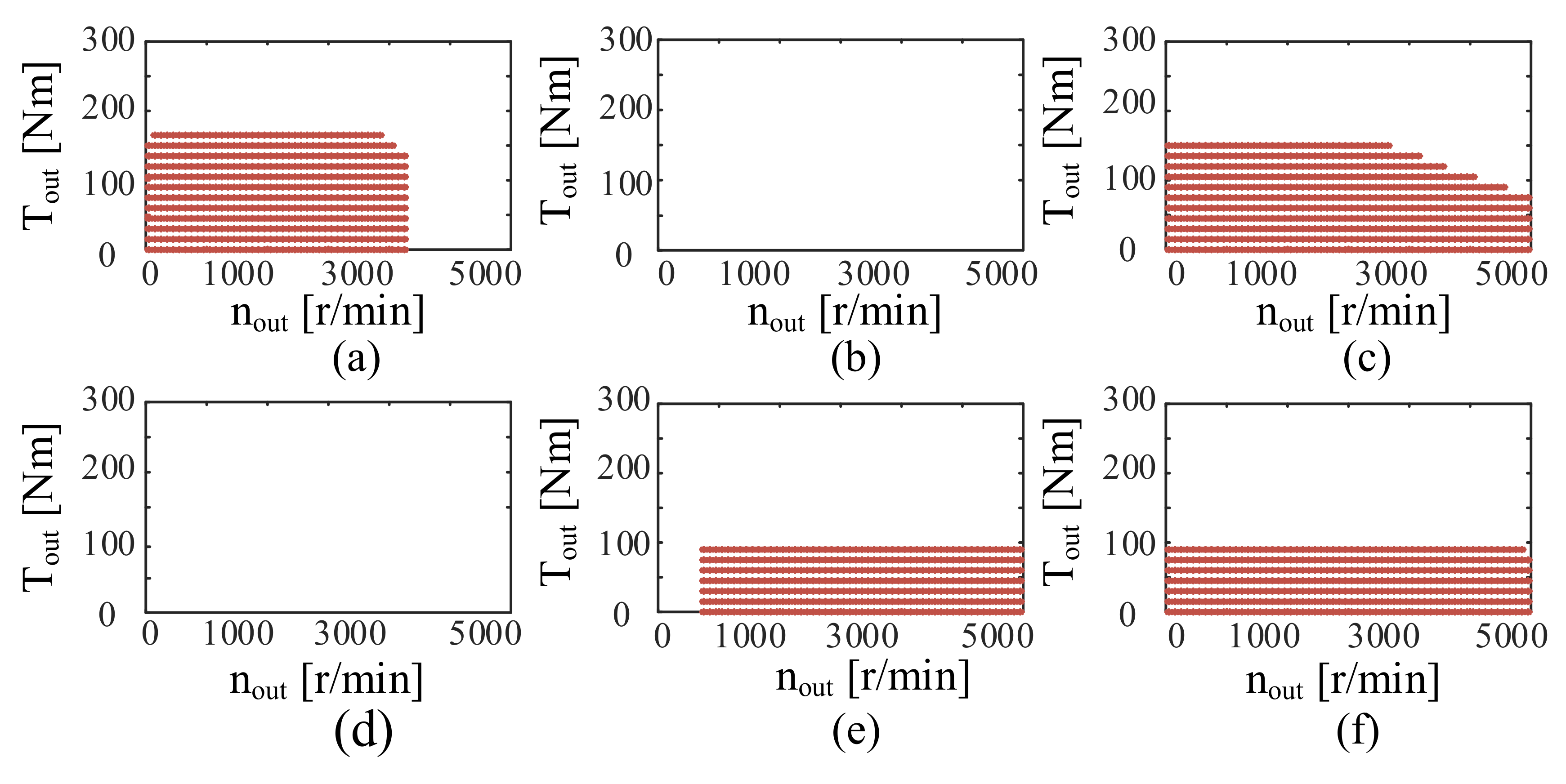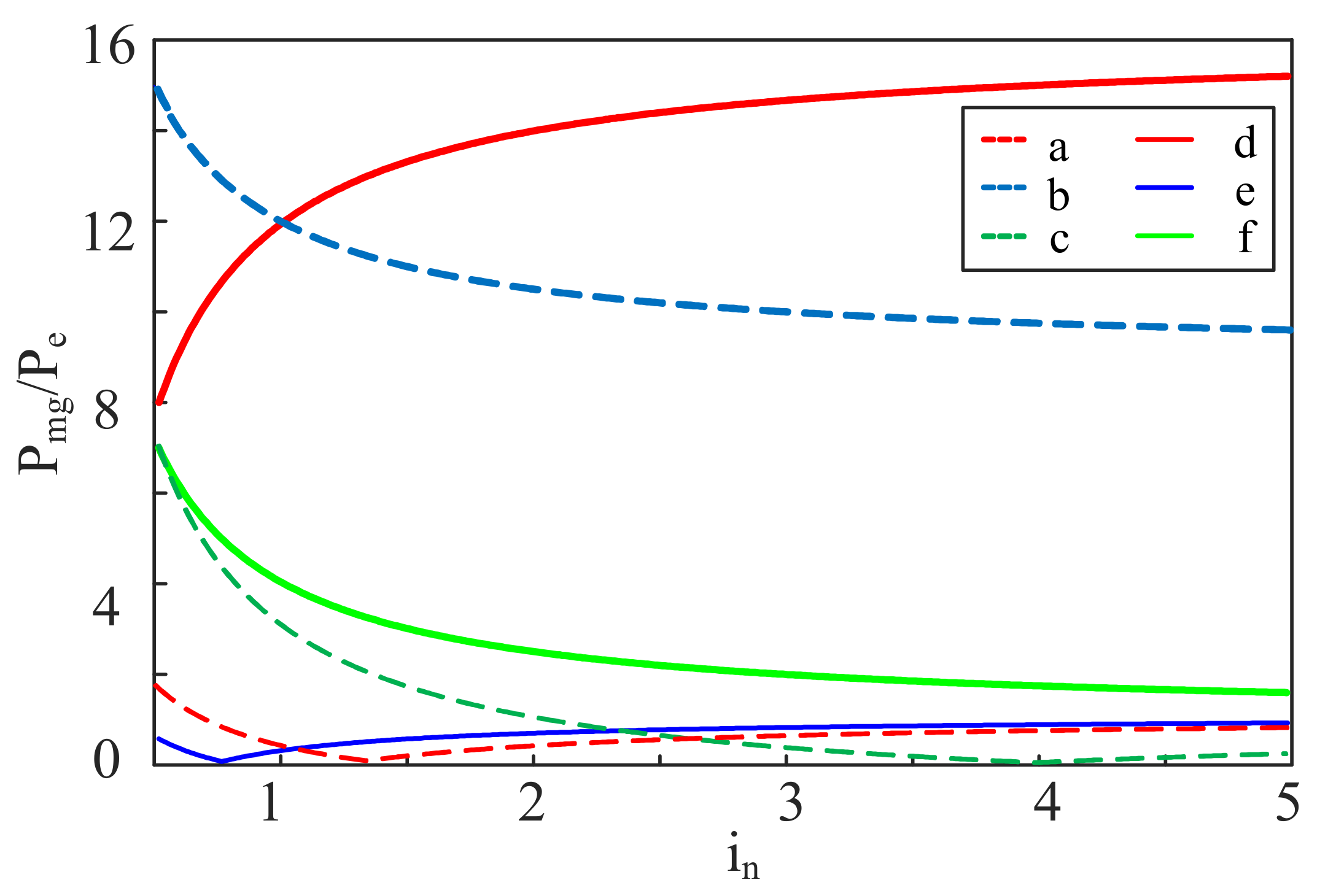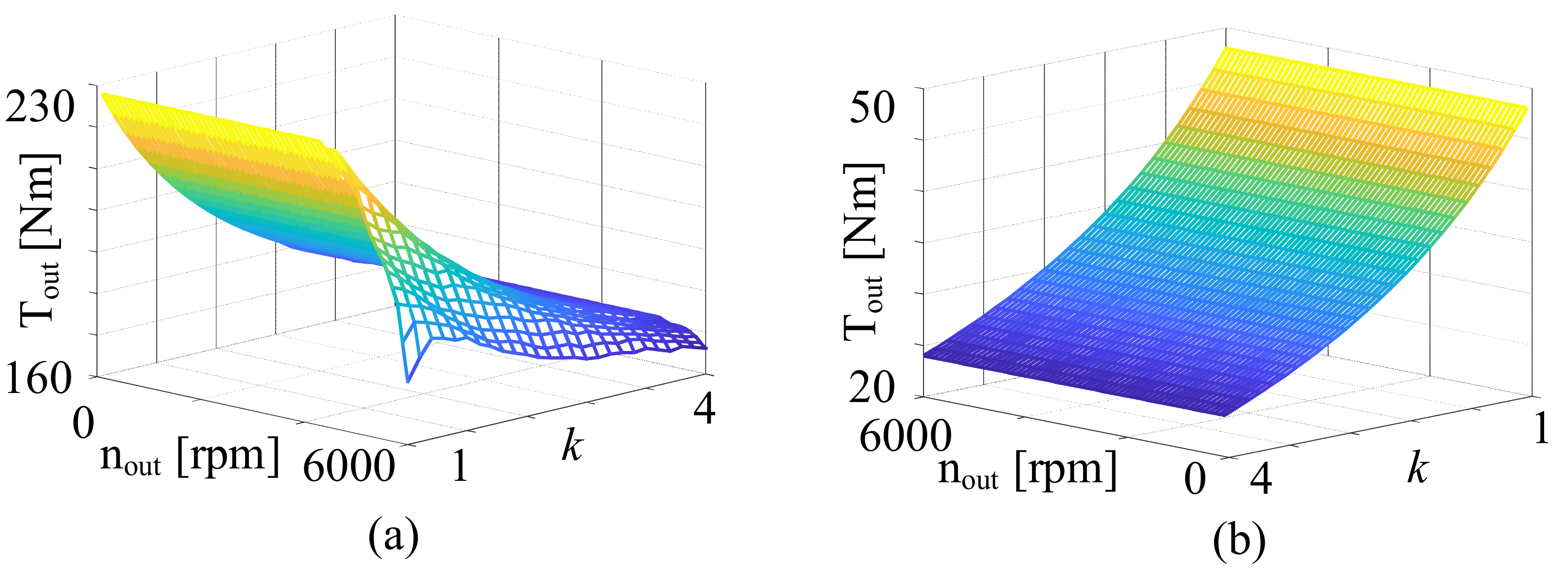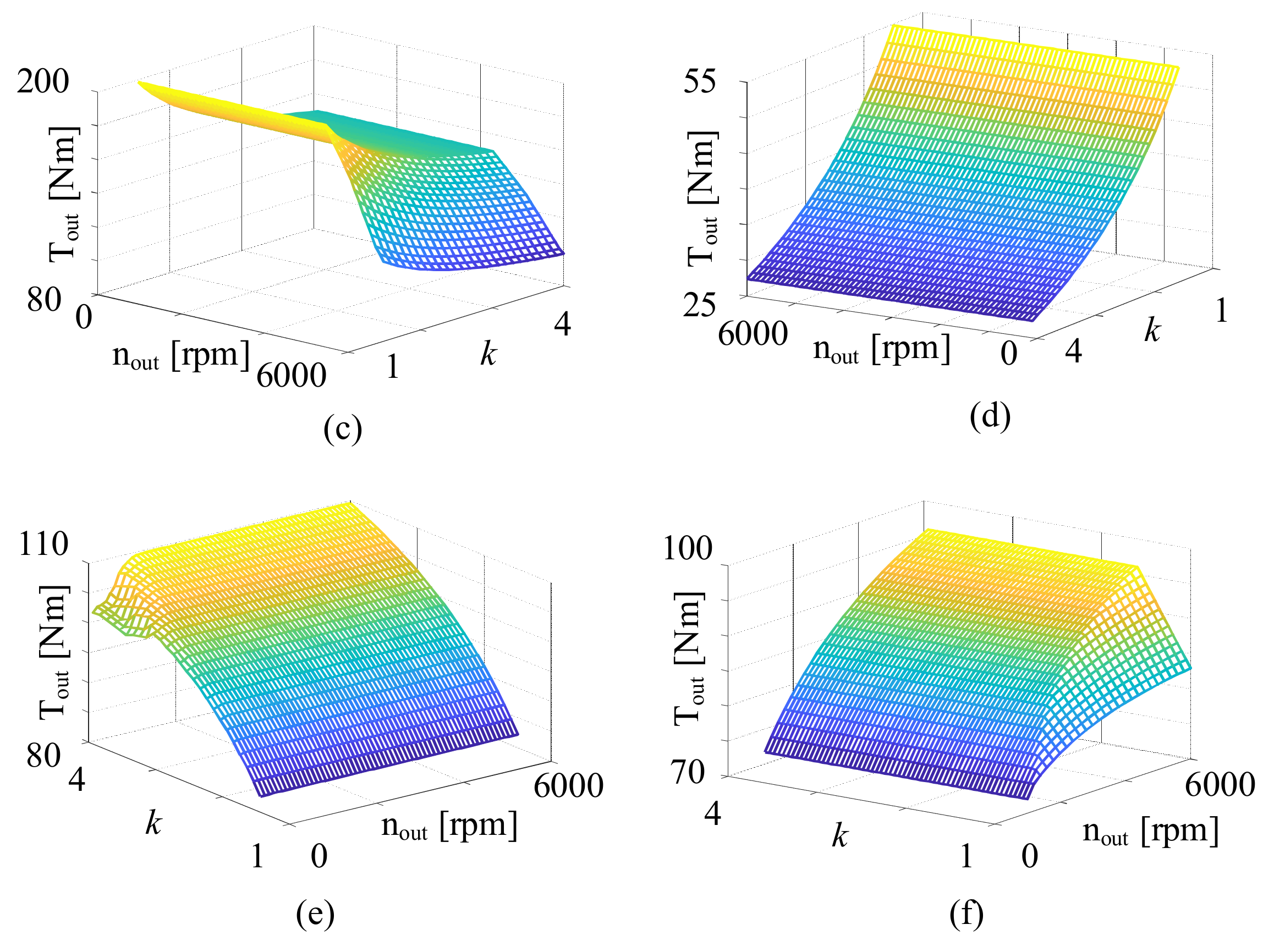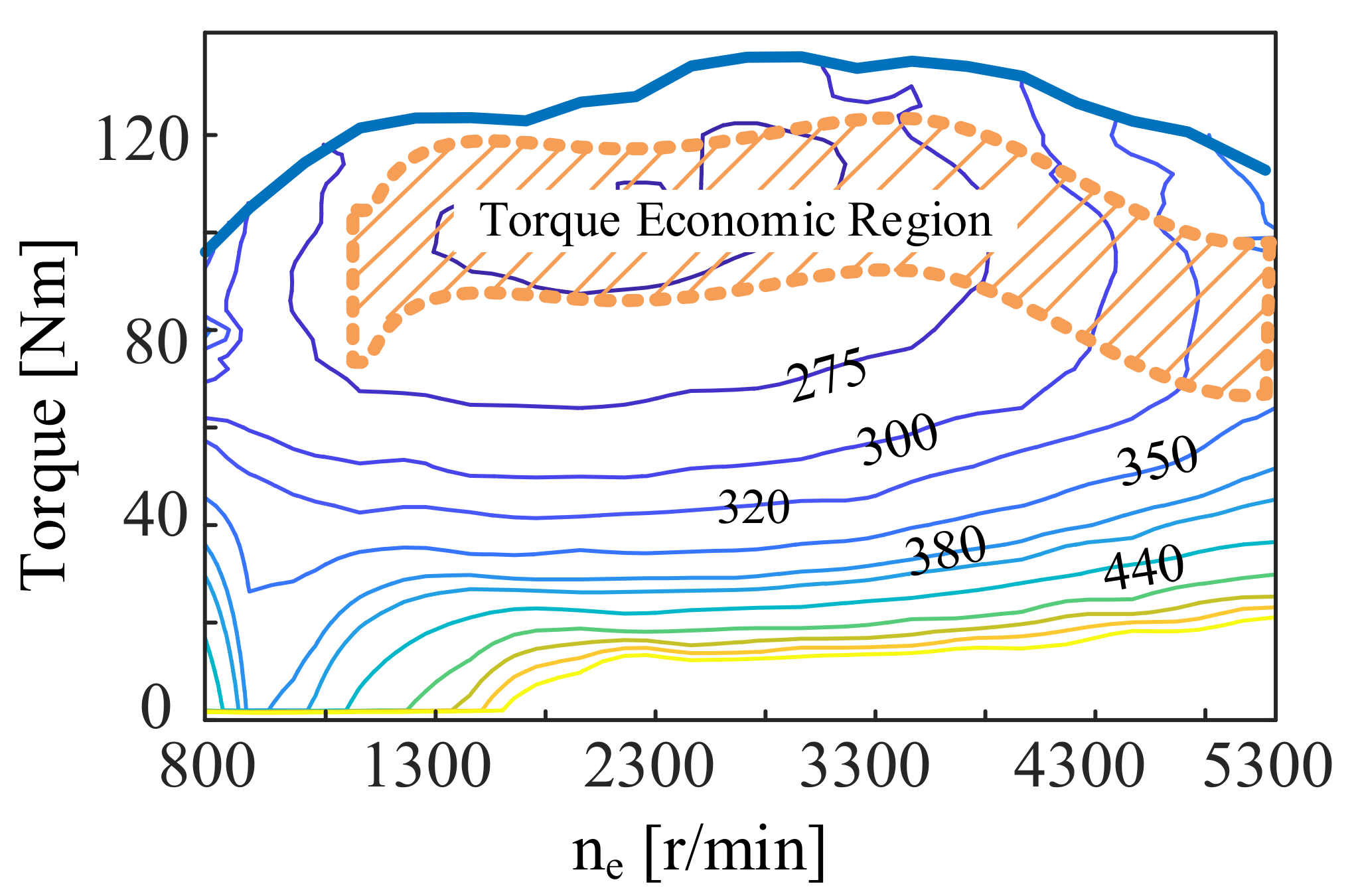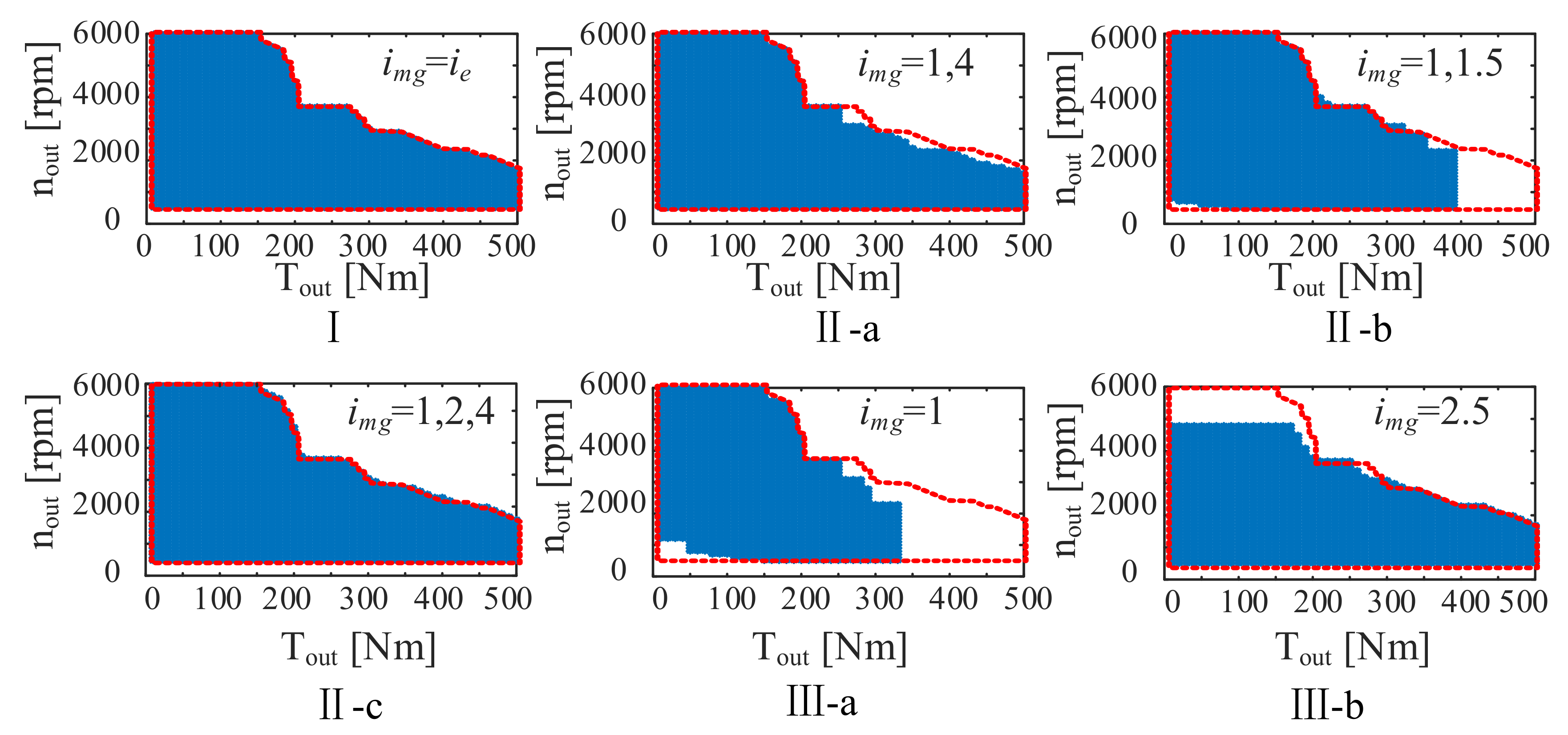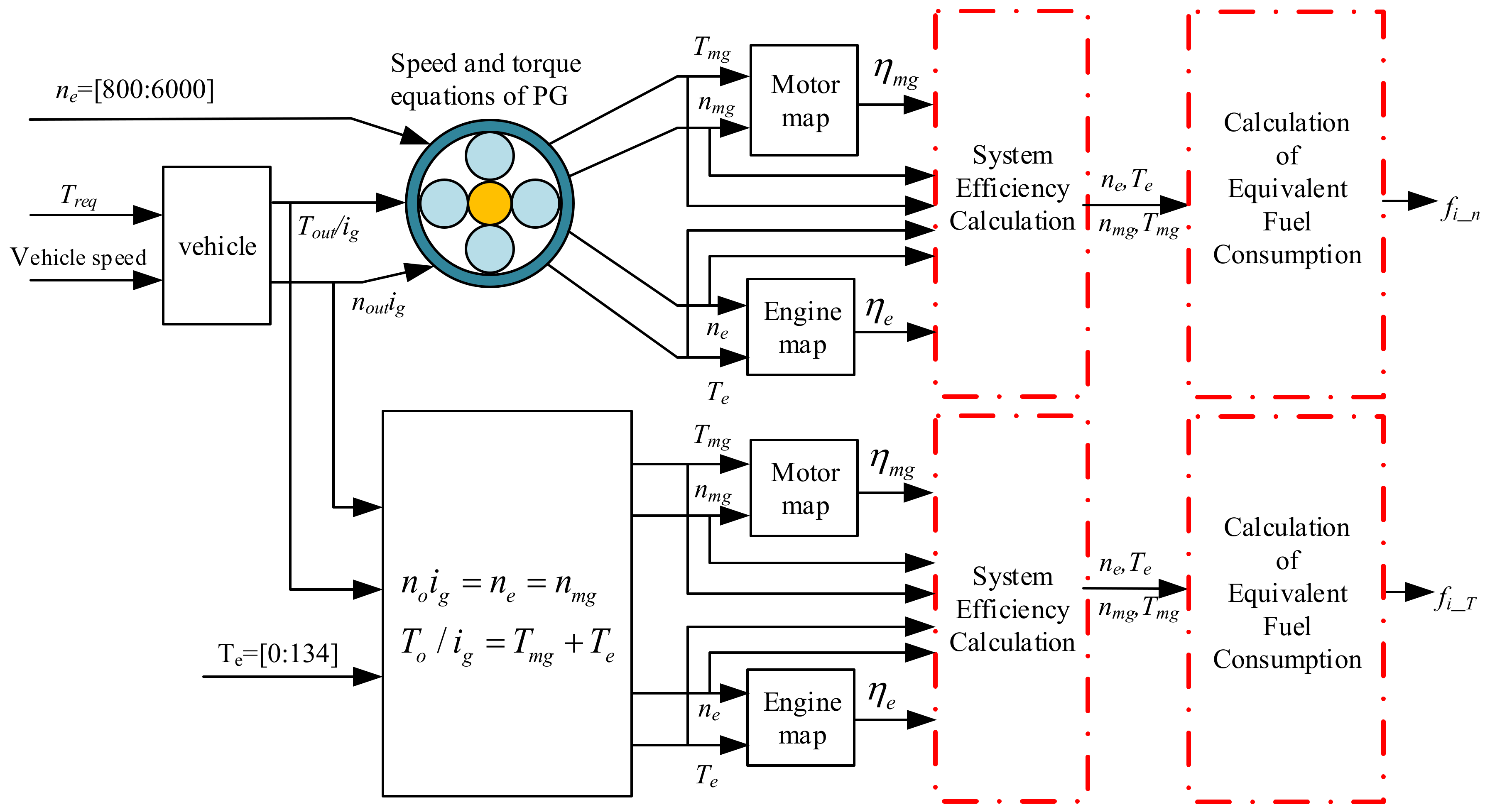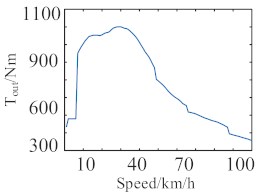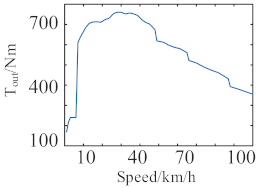1. Introduction
Energy and environmental regulations and policies have promoted the rapid development of hybrid electric vehicles (HEVs) [
1]. Compared to traditional fuel vehicles, hybrid vehicles have an electric drive system. Through flexible control strategies, the goal of reducing emissions and fuel consumption can be achieved. However, the system structure of HEVs is complicated. According to the power flow direction and power coupling mode, HEVs can be divided into series, parallel, and power-split types (series-parallel type) [
2].
Series HEVs are directly driven by a motor. The engine only serves the electric system and is completely decoupled from the wheels. It can run continually in an economic region and has a single configuration scheme. Parallel HEVs can realize the torque decoupling of engines and wheels. The power-split hybrid vehicle power system employs a planetary gear (PG) as the power coupling mechanism. Through the control of the motor and generator, speed decoupling or torque decoupling between the engine and the wheels can be realized [
3]. In the literature [
4,
5], the power-split mode of a single PG was classified; the input and output split configurations are suitable for low- and high-speed working conditions, respectively. In addition, owing to the different connection possibilities of components and gear trains, the number of schemes for the power-split configuration is more than those for the other two types of hybrid powertrain configurations, which makes the design more complicated.
Avoiding patent restrictions and developing a hybrid system with better performance is a concern for the automotive industry, and a set of advanced configuration design methods is a prerequisite for solving the above problems. Traditional design methods can improve existing structures or optimize the size parameters, but fail to improve design efficiency and choose optimal configuration. The combination of input and output power-split modes using a single PG and synchronizer, which reduces the loss of power flow in energy conversion, has been realized [
6]. In the literature [
7,
8,
9], the distribution of mechanical points of compound power-split PGs was optimized by utilizing the lever [
10] and matrix methods to realize the combination of input power-split and compound power-split modes, which widened the efficient operation range of the transmission system. However, the above methods lack systematic theoretical guidance and are not easily applicable to other configurations.
Currently, many abstract methods have been applied to configuration design. These methods are usually based on exhaustive mathematical principles, using graphics or dynamic equations as configuration expression tools. The basic design process is as follows: scheme generation → scheme screening → simulation verification → optimal solution.
Graphics-based methods use graphics to represent various schemes and intuitively show the connection between various components. Hong [
11] proposed a mechanical innovation design method in 1992, which exploited the existing mechanism, transformed it into a vertex–edge diagram [
12], and then recombined it to obtain new schemes. Owing to the numerous power-split configuration schemes, it is not realistic to use graphs to represent them manually. Therefore, mathematical expression methods have been deduced, and algorithms for graphs have been generated [
13,
14], which further broaden the application range of this method. This method has been used to design parallel and power-split configurations [
15,
16,
17]. Yang et al. proposed an improved graph theory design method [
18] and used a neural network model [
19] to improve design efficiency. A new design method employing the tree diagram concept in graph theory, which reduces invalid structures in the scheme generation stage, was proposed [
20]. In the literature [
21], the lever method was utilized to express all single-mode schemes of double PGs. The dynamic and economic performances of different PG characteristic parameters for these schemes were analyzed, and the optimal scheme was selected. The above graphics-based methods convert graphics into mathematical language that can be operated by a computer and employ algorithms to realize the automatic generation and screening of schemes when possible schemes increase significantly. However, it is hard to build the dynamic relationship using graphics tools to complete performance simulation.
Researchers have determined the relationship between the various components in the configuration using a dynamic matrix equation concerning PGs. A dynamic automatic modeling method that omits the graphical expression, which uses the lever method or matrix method (such adjacency method) to obtain the dynamic matrix equation, was proposed [
22,
23]. This model explores and derives different numbers of PGs using a coefficient matrix involving the moment of inertia of each component and the number of teeth, thus significantly improving the efficiency of the design process. In the literature [
24], the influence of different numbers of clutches on the configuration cost and complexity was considered, and this method was used to design the power-split configuration of dual planetary sets. This design method was extended to a single-motor configuration containing an automatic transmission [
25], and the coefficient matrix was improved by incorporating the representation method of the adjacency matrix from graph theory. Another dynamic modeling design method combined with a graph theory model considering different operation modes was proposed, and the scheme of the dual planetary set with multiple actuators was screened [
26]. At present, the automatic modeling method still lacks universality, but it is worthy to improve the configuration’s mathematical model.
The abovementioned graphics or dynamic design methods yield a feasible scheme through the mathematical principles of combination and exhaustion and yield an optimal solution. In addition, the alternative scheme depends on a preset range of components; therefore, the presumed optimal scheme may only be the second-best solution [
27]. Currently, there is no principle for the fuel-saving mechanism of HEVs (the engine works in the economic area under the coordinated control of the motor through the power coupling mechanism) to guide the design of HEV powertrains. Therefore, in this study, based on the fuel-saving mechanism of HEVs, a systematic design method for a single-motor hybrid power system was proposed. We optimized and screened the basic schemes of speed and torque coupling by four capability indicators. Thereafter, a configuration reconstruction was performed to further improve the configuration. Relying on the multiangle evaluation of each configuration scheme, the HEV powertrain configuration of a single motor with an ideal comprehensive performance was obtained. A chart of the design method is shown in
Figure 1.
The contribution of this article is that it proposes a design method of basic configuration analysis, selection, reconstruction, and multiangle evaluation to generate and choose the feasible powertrain configuration solution.
This article is organized as follows. In
Section 2, we focus on four aspects: speed-decoupling ability, torque-decoupling ability, electric power characteristics, and torque amplification ability. We analyzed the basic schemes of speed and torque and explored the working principle and characteristics of the basic decoupling ways. In
Section 3, configuration reconstruction methods are studied. After introducing the indicator of adaptability, the multiangle evaluation method of configuration is established in
Section 4; the optimal single-motor scheme S-4 is obtained. To verify the validity of the above works,
Section 5 presents comparison performances between S-4 and the Toyota Hybrid System (THS). In
Section 6, a summary and outlook of the study are provided.
6. Conclusions
Based on the fuel-saving mechanism of HEVs, this study proposed a configuration design method. Considering a single-motor hybrid power system as the research object, four capability indicators, including speed-decoupling ability, torque-decoupling ability, electric power characteristics, and torque amplification ability, were proposed to analyze the characteristics of the basic speed and torque-coupling schemes, and six schemes were selected with respect to the four capabilities. To improve the chosen schemes, research on configuration reconstruction was conducted. By establishing a multiangle evaluation and selection method for power, economy, and working condition adaptability, the best configuration, S-4, was obtained from these feasible scheme sets. Comparing S-4 and THS by simulation analysis to verify the availability of the design method, it was found that the dynamic performance of S-4 is better than that of THS owing to S-4′s higher driving force. The times required to attain 100 km/h from 0 km/h for THS and S-4 are 13.5 s and 6.69 s, respectively. Furthermore, its economy is almost equal to that of THS: The consumption of S-4 is 4.74 L/100 km, the consumption of THS is 4.68 L/100 km. S-4 has lower electric loss, and THS works more in high-efficiency regions.
The contribution of this article is that it proposes a design method of basic (preliminary) configuration analysis, selection, reconstruction, and multiangle evaluation. The method based on a fuel-saving mechanism provides a clear thread to indicate configuration design without resorting to exhaustive search principles.
Dual-motor configurations or more complex hybrid power systems can be designed using this method. More performance indicators, such as cost and complexity, can be introduced to evaluate the configuration from the perspective of commercial products.



